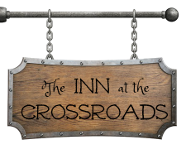“Jon was breaking his fast on applecakes and blood sausage when Samwell Tarly plopped himself down on the bench. ‘I’ve been summoned to the sept,’ Sam said in an excited whisper. ‘They’re passing me out of training. I’m to be made a brother with the rest of you. Can you believe it?'” -A Game of Thrones
Our Thoughts
The clear predecessors of the modern day doughnut, the medieval applecakes are fantastic. Called krapfen in Germany, these fluffy fried morsels are filled with nutty apple goodness.
The modern cakes are essentially apple coffeecake muffins. The crunchiness of the crumble top contrast with the softness of the cake itself. The apples melt as they bake, imbuing the cake with an incredible moistness and apple flavor.
Like Jon Snow, you’ll be hard pressed to eat just one; We’re hard pressed just to pick our favorite.
Both recipes are available in the Cookbook.








